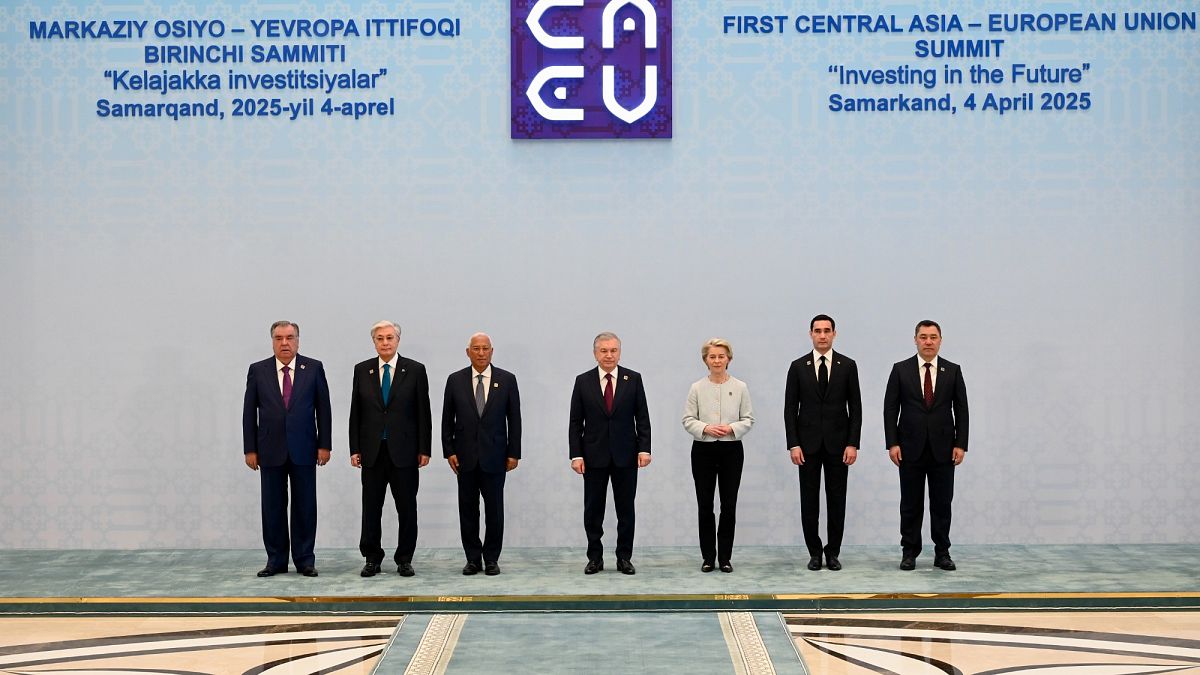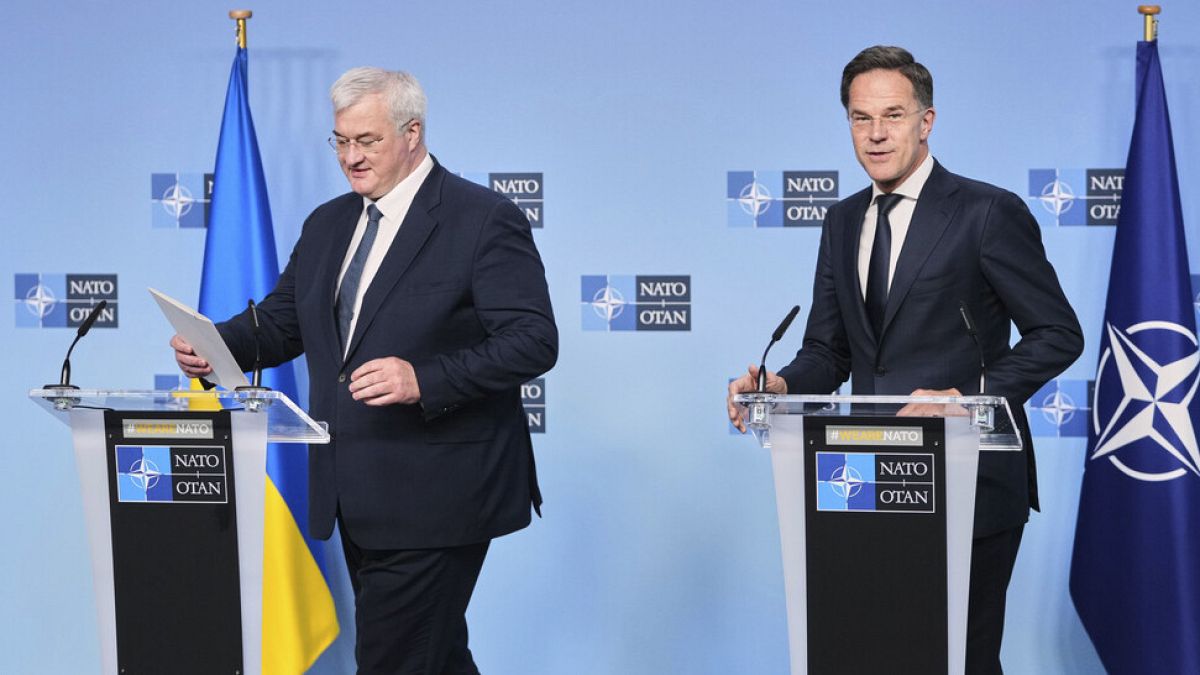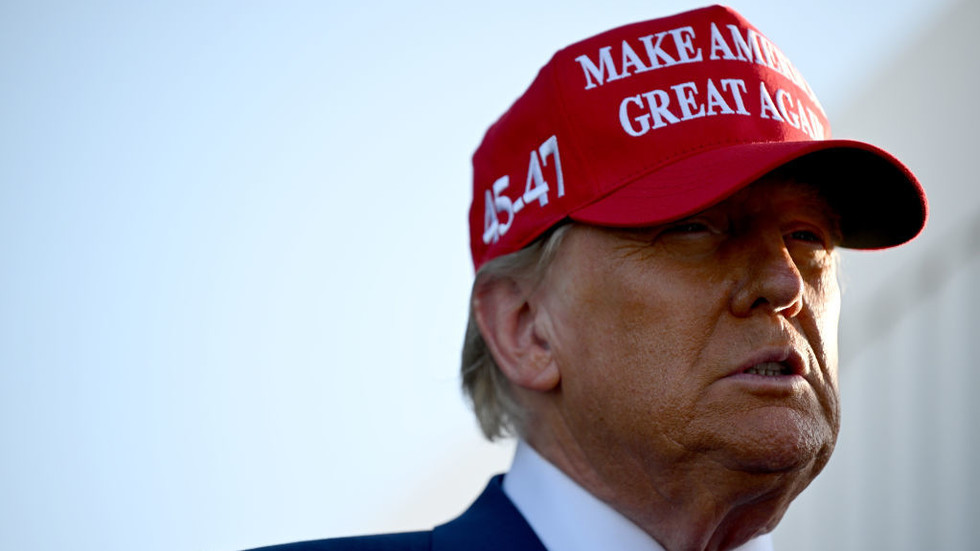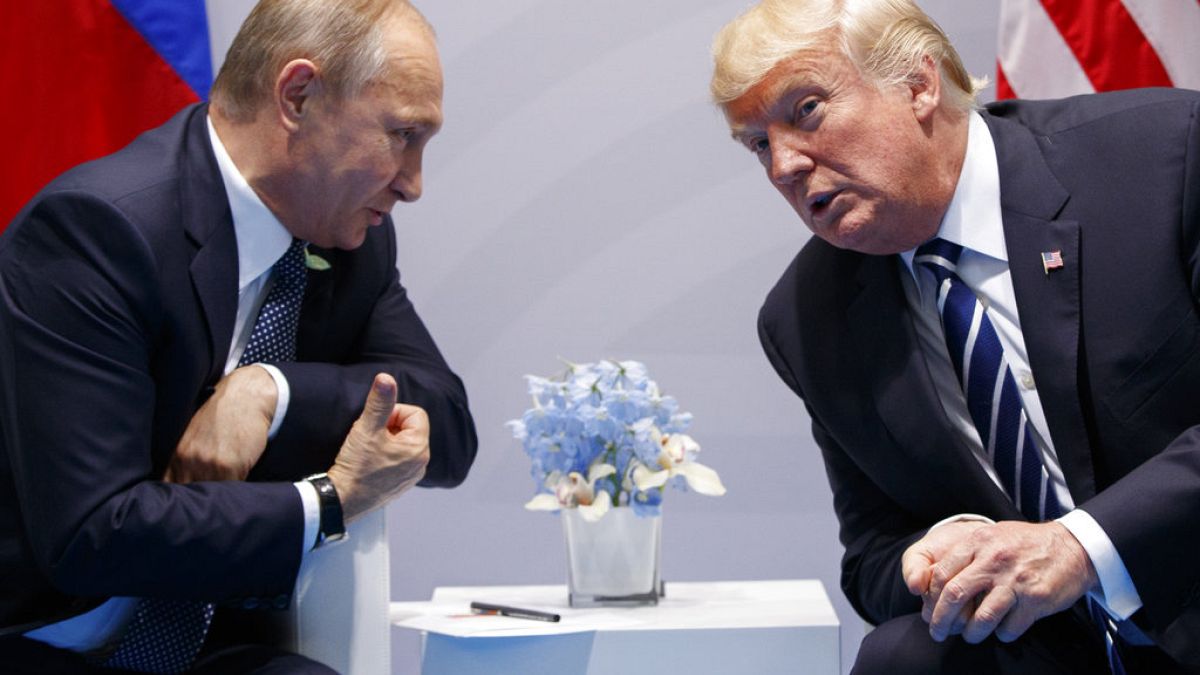President Donald Trump has announced a "reciprocal" 20% tariff on EU goods entering the US, claiming the 27-country bloc is "ripping America off" by charging a 39% levy on US products entering its market.
"They charge us 39%, we’re going to charge 20% – so we're charging them essentially half," Trump claimed as part of his sweeping "Liberation Day" announcement on Wednesday.
But does the EU really slap a hefty tariff on US goods, and if it doesn't, how has that rate been calculated?
The EU does not impose a 39% tariff on US goods
Available evidence shows that the real EU tariff rate is nowhere near the 39% mark.
The European Commission says it charges an average tariff of just 1% on US products entering the EU market, "considering the actual trade in goods". It adds that the US administration collected approximately €7 billion of tariffs on EU products in 2023 compared to the EU's €3 billion on US goods.
A World Trade Organisation (WTO) estimate puts the average tariff rate on US products entering the EU slightly higher at 4.8%.
In both cases, this is far off the 39% figure quoted by the Trump administration.
"It is not factually correct to say that the European Union imposes tariffs of 39% on the US. On the contrary, it's a nearer 3%," Andrew Kenningham, Chief Europe Economist at Capital Economics, told Euronews, putting the rate somewhere in between the Commission's and WTO's estimations.
"(The Trump administration's) methodology, to the extent that there is one, is neither credible nor justified to arrive at these numbers," a senior EU official told reporters on Thursday morning.
The US administration, however, points to an unfair "asymmetry" in certain tariff rates. For example, the EU applies a 10% tariff on US car imports, while the US charges just 2.5%.
Brussels says, however, that this fails to consider the fact that the US imposes a 25% tariff on EU-made pickup trucks, which are a favourite among US consumers and account for "about one third of all vehicle sales".
How has the Trump administration arrived at these numbers?
In fact, there's a simple formula to Trump's giant cardboard table.
The first column — the tariff rate imposed by the US' partners — seems to have been calculated by taking Washington's trade deficit with that partner and dividing it by its exports to the US.
The second column — the Trump administration's so-called reciprocal rate — is around half of that rate.
In the EU's case, taking 2024 figures provided by the European Commission, that would mean a trade deficit of €198.2, divided by the EU's total exports to the EU of €531.6, resulting in a tariff rate of 37.2% - close to the 39% defined by Trump.
The New York Times carried out the same exercise using figures defined by the US Trade Representative and found the result lands exactly on the 39% mark.
Andrew Kenningham told Euronews this "odd" formula, which is solely based on the US' trade deficit with its partners, is a "a completely new departure" that has taken "everybody by surprise."
"To be honest, people are thinking it's very odd," Kenningham said.
"The formula that has been used (...) is logical only in the head of President Trump," Thierry Mayer, Professor of Economics at Sciences Po, told Euronews.
"So in fact, it is the obsession for President Trump with bilateral deficit that guides this logic."
"It's not at all a measure of tariff level or of any of the other things which we were told might be taken into account in the reciprocal tariffs," Kenningham added.
"I think the fact that the tariffs are based on the size of the trade imbalance means that they're not actually reciprocal tariffs in the sense in which most people might understand it — we'll do to you what you do to us — which is how the word 'reciprocal' was explained initially," he added.
How does the Trump administration justify the logic?
In a statement released Wednesday night, the US Trade Representative explained that Trump’s sweeping "reciprocal tariffs" were calculated using a complex formula that aims to "balance bilateral trade deficits" between the US and its trading partners.
It adds that the calculation factors in "a combination of tariff and non-tariff factors that prevent trade from balancing."
In other words, the 39% figure has been inflated by factoring in a range of measures that the Trump administration considers to place barriers to trade - not just tariffs.
A White House aide insisted on Thursday that their calculation was complex and factored in "non-tariff barriers."
These so-called "non-tariff barriers" include intellectual property rules, environmental and digital regulations, licensing requirements and, in some cases, "corruption."
The US Trade Representative names a raft of specific EU legislation they consider to be hampering free trade with the US, including the bloc's regulations on packaging waste, deforestation, chemicals and its sweeping digital rulebooks, the Digital Markets and Services Acts (DMA/DSA).
Another parameter Trump reportedly ordered his staff to consider when developing the reciprocal tariffs was Value-Added Tax (VAT), claiming it is a kind of tariff in itself. The EU has fiercely contested this, saying "VAT is not a trade measure, let alone a tariff."
But for Trump, it’s problematic that foreign governments collect VAT from their consumers on US-manufactured goods.
In the EU, VAT is generally high at around 20%, while the US equivalent sales tax is low. California has the highest state sales tax rate at 7.25%.
The EU insists its VAT system is "fair and non-discriminatory, applying equally to both domestically produced and imported goods."

 18 hours ago
1
18 hours ago
1






 We deliver critical software at unparalleled value and speed to help your business thrive
We deliver critical software at unparalleled value and speed to help your business thrive






 English (US) ·
English (US) ·